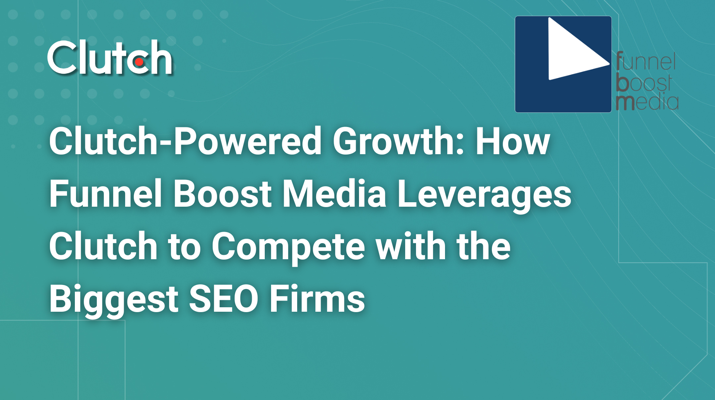

Updated December 18, 2025
Pay-per-click advertising, or PPC, is reported to boost brand awareness by as much as 80%. But with an ever-increasing number of PPC channels, how do you choose one that’s the right for your business?
Ask any business what they’re currently doing to promote their brand online, and you’ll likely get an answer filled with these acronyms:
As proven methods for increasing online awareness, responses like the above are unsurprising. Each one plays a significant part of most digital marketing campaigns.
Looking for a SEO agency?
Compare our list of top SEO companies near you
Does listing these categories really answer the question, though? Doubtful. At least, not in a way that provides valuable insight into a business’s chosen methodologies.
As we delve further into packing these terms, we’ll focus exclusively on PPC. Why? Because pay-per-click advertising has fast become one of the biggest lead generators for businesses and is nearly as effective as email marketing.
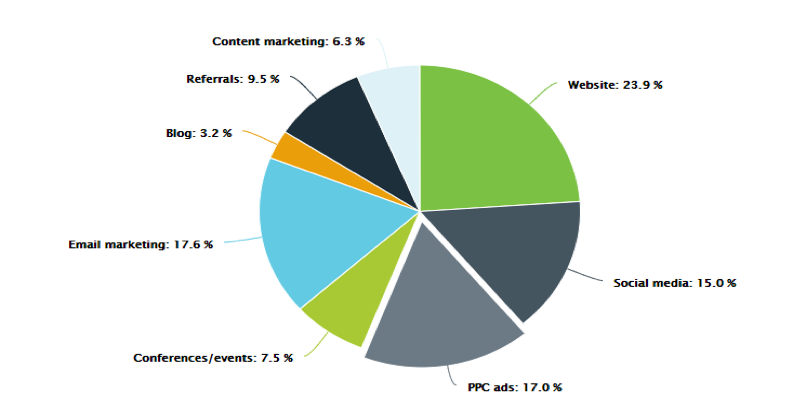
As we can see from this graph, the average PPC ad campaign makes up around 17% of total lead generation; only website marketing is noticeably more effective.
PPC ads are more effective lead generators than content marketing, social media marketing, referrals, blog posts, or event marketing.
“PPC” is hardly a sufficient answer for how you’re promoting your brand online. As an umbrella term in digital marketing, PPC encompasses many forms of paid advertising. Since many people consider it to mean different things, not every PPC campaign is the same.
Most importantly, businesses want a wide range of distinct outcomes from their PPC efforts. To accommodate differing needs, there are a variety of available channels.
Options that are still somewhat “under the radar" include:
The most recognizable choices?
With these elements in mind, how can you choose the right PPC channel for your business? Select one that will both meet your requirements and achieve the specific goals of your campaign.
Here are four factors to take into consideration when choosing a PPC channel:
Defining a target audience is a building block, if not the foundation, of a successful marketing campaign. Businesses need to apply this concept directly to PPC, and knowing your audience is a critical factor to do so.
It’s essential to get the right ads in front of the right eyes at an appropriate time, and choosing the right medium is imperative.
Countless options exist for audience segmentation, so we’ll use a basic example: B2C vs. B2B audiences.
Consider PPC in terms of Facebook, a primarily community-based platform. The audience isn’t there specifically to buy, but they’re largely open to being nudged in the right direction.
Seemingly, this would make it a good platform choice for businesses with B2C audiences.
On the contrary, Facebook fares less well with B2B audiences than other social media platforms. Despite much debate surrounding the role of social media in B2B buying, it’s undeniable that Facebook is not considered as high of a valuable platform.
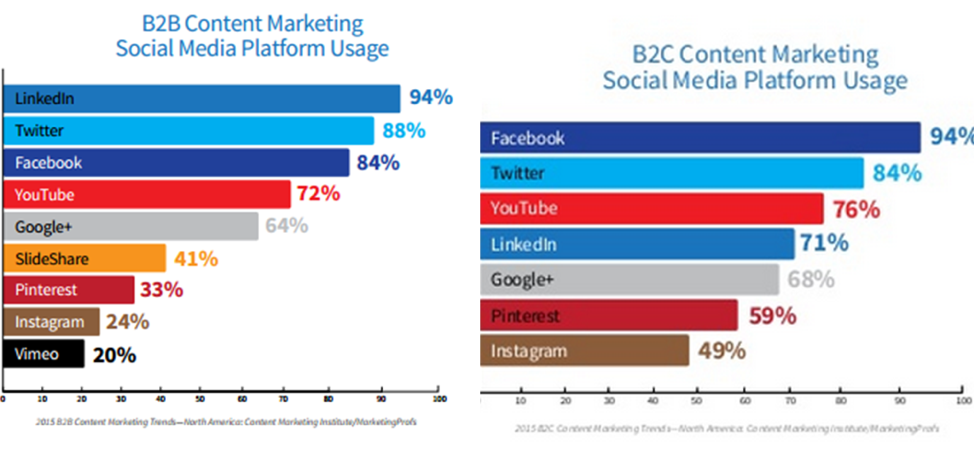
As we can see, Facebook is the most effective channel for marketing to B2C audiences, but it falls behind LinkedIn and Twitter when it comes to attracting B2B audiences.
LinkedIn, which tops the B2B marketing ranks, often proves a better choice of PPC channel for B2B efforts, but it’s rarely favored by B2C marketers. It has limited PPC features and no options for retargeting or audience customization.
Before selecting a PPC channel, select target keywords and key phrases and consider where your audience searches for them.
Remember, while we can statistically determine the most likely platform a demographic will use, audiences often use multiple networks. The average American uses 3 social networks simultaneously, according to the Pew Research Center.
When it comes to keywords, Google Ads is the number one PPC channel that stands out. Since the introduction of Web 3.0 and the ‘semantic web,’ Google’s strong focus on context can help businesses reach specific audiences, especially B2C ones.
B2C PPC ads on Google Ads are reported to have some of the highest conversion rates, boasting an average of 6.34%, compared to just 3.04% for B2B PPC ads on Google Ads.
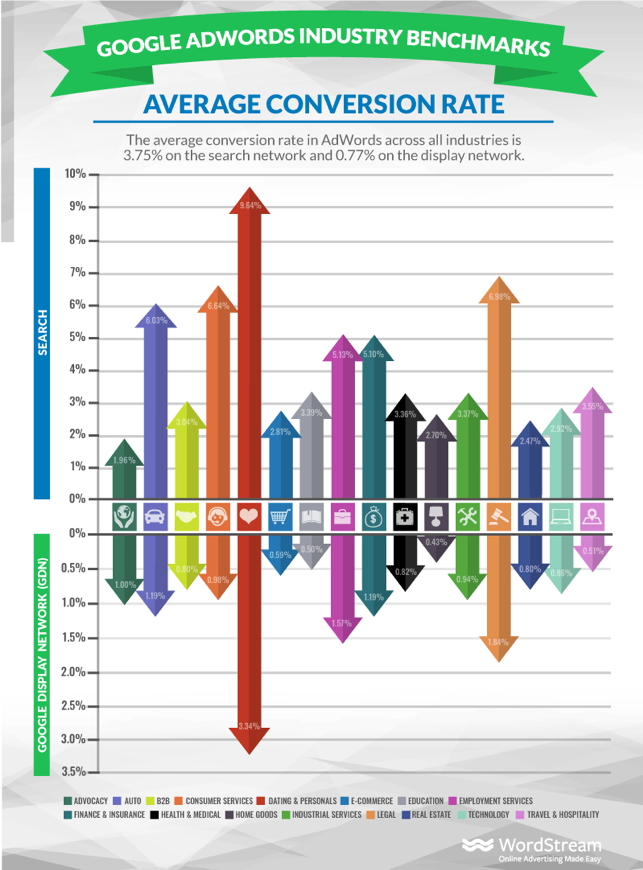
Of all the potential reasons this could be, it’s worth considering the impact of Google Ad’s focus on context–especially with more B2C audiences searching for local services.
Where context like geographical location is involved, Google Ads’ focus on semantics and ‘reading between the lines’ of a search makes it a good choice of PPC channel for B2C businesses.
Before making a final decision, ask this important question:
“Where will my ad be displayed?”
This consideration is closely linked with target audience analysis but goes one step further by accounting for the degree of exposure required to reach these audiences and create a successful campaign.
Google Ads shines yet again when it comes to the exposure and reach of its text ads on SERPS, ads in apps, and on YouTube videos.
There’s a marked difference of opinion about the role creativity should play in PPC. Display ads and text ads have unique pros and cons.
Display ads are the most valuable for businesses that operate within highly visual and creative industries. Google Ads now offers Display Ads, but Bing’s advertising platform beat it to the finish line. Pinterest’s Promoted Pins are also an option worth considering.
Circling back to exposure and reach, Google boldly claims that its ad services reach 90% of people on the internet (a modest estimate). It also removed the SERPS sidebar option for PPC resulting in reduced exposure; a feature that channels like Bing still offer to marketers.
Bing’s advertising platform is often overlooked despite how significantly Bing’s overall market share has grown in recent years as a result of Microsoft’s increasingly positive reputation.
Google Ads might not be the best option in terms of international reach. For example, Google services are banned in China where channels like Twitter are regularly used despite being officially blocked.
Businesses that want to reach audiences in Asia can also try alternative PPC channels such as Baidu’s advertising platform Baidu Tuiguang can be useful due to its popularity in the East.
Your company’s digital marketing budget is obviously a primary consideration when choosing a PPC channel. Costs vary considerably and are affected by the aspects below:
Since more than half of all marketers are planning to increase their PPC budget, either it’s a highly effective marketing method or there are significant costs involved.
In practice, it’s most likely a combination of both, especially since PPC costs have notably risen in recent years.
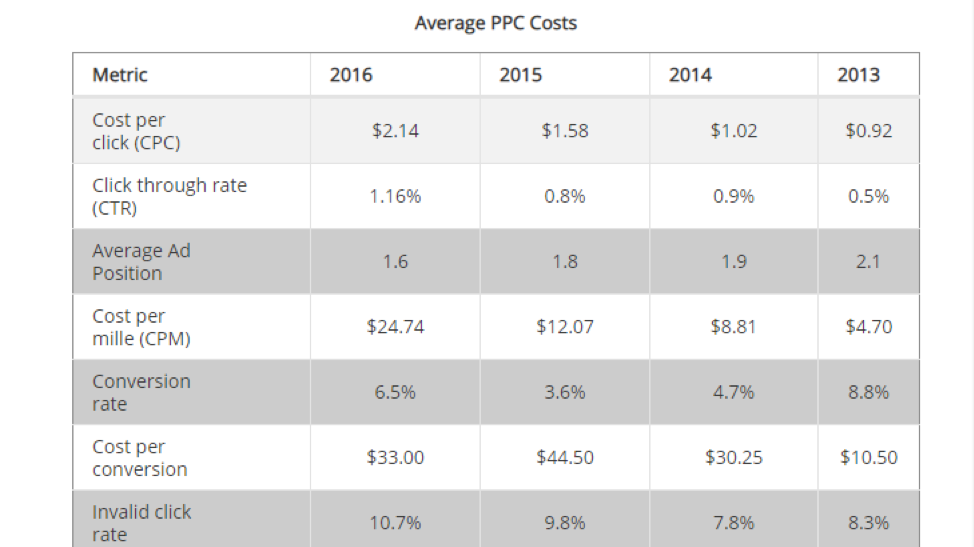
Average PPC costs increased from $0.92 in 2013 to $2.14 in 2016 (although it’s good to see that the clickthrough rate has also improved in this time).
While the actual cost of a PPC campaign depends on the channel and your campaign plan, the average cost-per-click for Google Ads is $2.32.
Aside from cost, think about the overall PPC return on investment. For every $1 spent on Google Ads, it’s commonly believed that businesses earn an average of $2 per click.
Customer lifetime value matters equally. B2B businesses may be willing to spend more on PPC due to the higher potential ROI from B2B customers with a greater CLV (customer lifetime value).
Finally, conversion rates vary by channel. Be wary of channels with typically higher conversion rates that could significantly increase the cost of PPC.
Rather than a single method of digital marketing, PPC is a category that includes several ways to reach audiences via multiple channels.
Selecting the right channel is key to creating a successful PPC campaign that generates more leads and results in higher profits.
Choosing a PPC channel requires significant thought. Break down all this information into 3 straightforward questions to simplify the process:
Prioritize what marketing methods are most important, and budget accordingly.
The most important step in every PPC campaign is preparation, know your audience and create a message that is inviting them to give your product or service a try. Small tip: fear of missing out or showcase of benefits usually work best. Don’t be afraid to experiment!
Optimizing your audience and ads is equally important, keep your eyes on metrics such as CTR and CPC as they are clear indicators if you’re going in the wrong direction.
PPC is just one of the channels of digital marketing that you should employ. If done right, it’s quick and one of the best ways to get results.
 Nikola Banicek is an internet marketing specialist at Point Visible content marketing agency. He’s a laid-back guy with experience in PPC, copywriting, and project planning. When he’s not working, he’s either gaming or watching anime.
Nikola Banicek is an internet marketing specialist at Point Visible content marketing agency. He’s a laid-back guy with experience in PPC, copywriting, and project planning. When he’s not working, he’s either gaming or watching anime.


